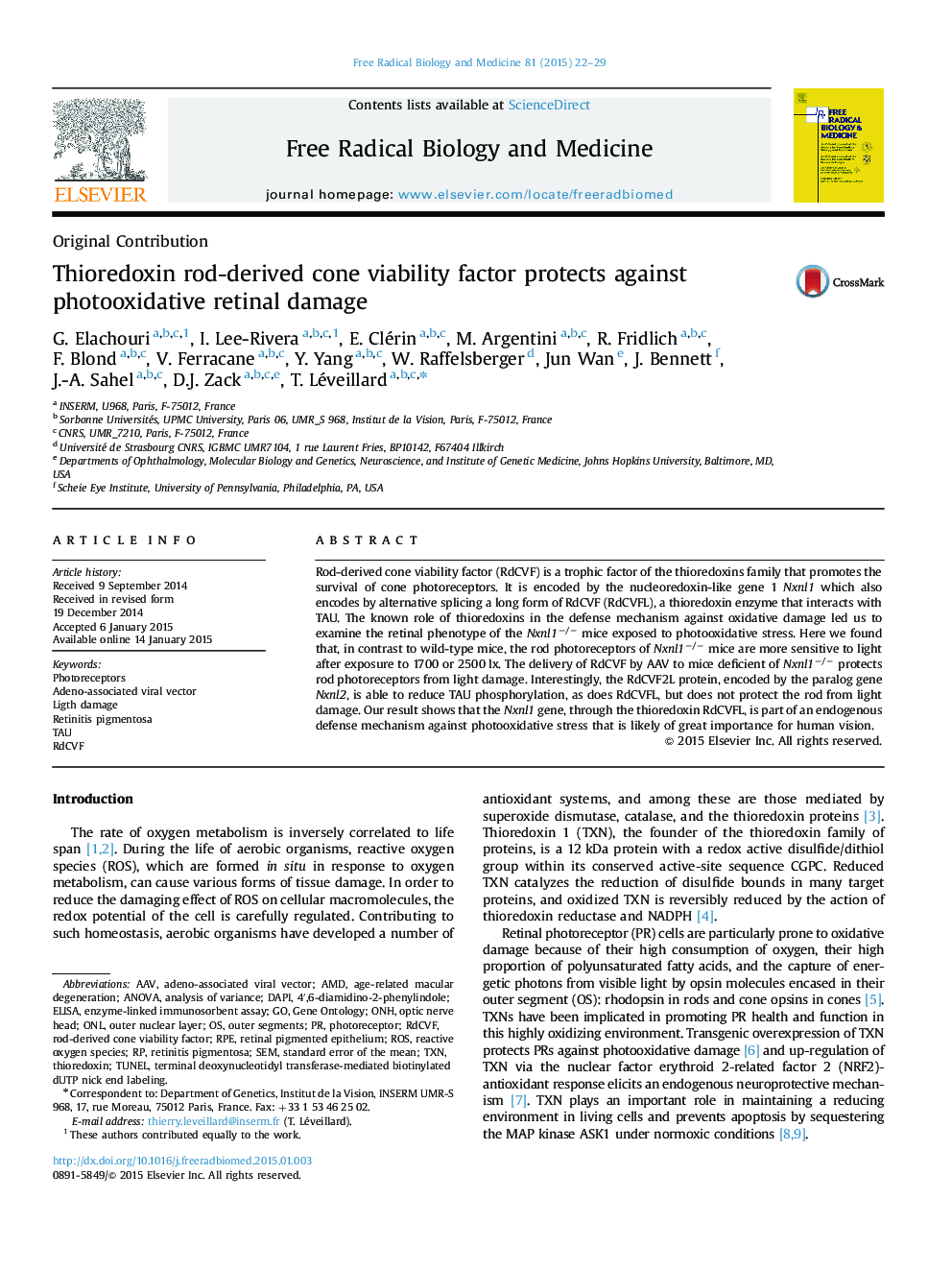| کد مقاله | کد نشریه | سال انتشار | مقاله انگلیسی | نسخه تمام متن |
|---|---|---|---|---|
| 1907813 | 1534961 | 2015 | 8 صفحه PDF | دانلود رایگان |
• The nucleoredoxin-like 1 KO retina is highly susceptible to photo-oxidative damage.
• The thioredoxin RdCVFL encoded by Nxnl1 protects photoreceptors from light damage.
• RdCVFL and RdCVF2L inhibit TAU phosphorylation in the retina.
Rod-derived cone viability factor (RdCVF) is a trophic factor of the thioredoxins family that promotes the survival of cone photoreceptors. It is encoded by the nucleoredoxin-like gene 1 Nxnl1 which also encodes by alternative splicing a long form of RdCVF (RdCVFL), a thioredoxin enzyme that interacts with TAU. The known role of thioredoxins in the defense mechanism against oxidative damage led us to examine the retinal phenotype of the Nxnl1−/− mice exposed to photooxidative stress. Here we found that, in contrast to wild-type mice, the rod photoreceptors of Nxnl1−/− mice are more sensitive to light after exposure to 1700 or 2500 lx. The delivery of RdCVF by AAV to mice deficient of Nxnl1−/− protects rod photoreceptors from light damage. Interestingly, the RdCVF2L protein, encoded by the paralog gene Nxnl2, is able to reduce TAU phosphorylation, as does RdCVFL, but does not protect the rod from light damage. Our result shows that the Nxnl1 gene, through the thioredoxin RdCVFL, is part of an endogenous defense mechanism against photooxidative stress that is likely of great importance for human vision.
Journal: Free Radical Biology and Medicine - Volume 81, April 2015, Pages 22–29
